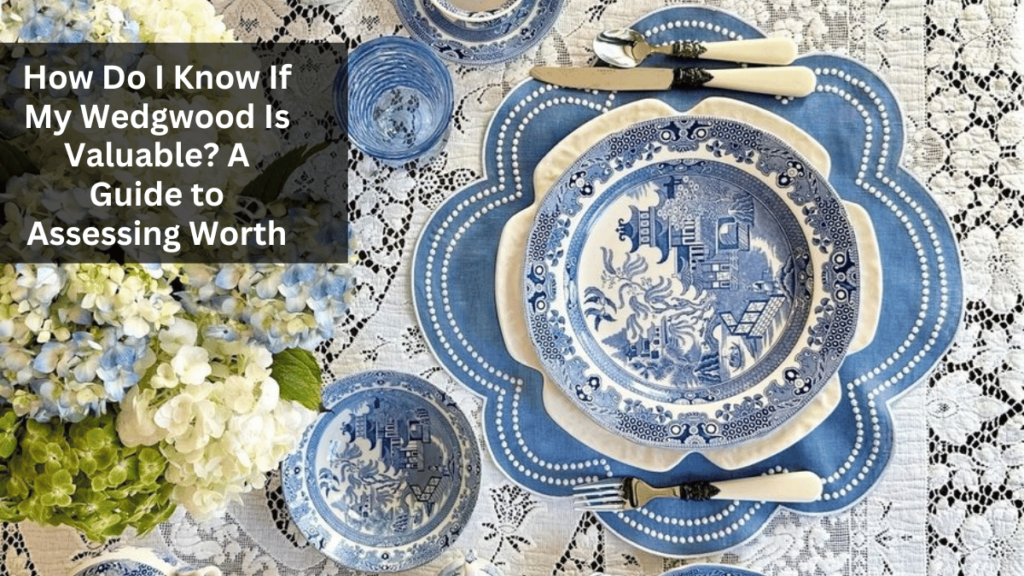Understanding the Value of Your Wedgwood
Wedgwood pottery has long been revered for its craftsmanship and historical significance. However, determining the value of a Wedgwood piece can be a complex task. Whether you’ve inherited a collection or found a piece at a thrift store, understanding its worth requires careful examination.
Identifying Authentic Wedgwood
Hallmarks and ImprintsOne of the first steps in assessing the value of your Wedgwood is to examine its markings. Authentic Wedgwood pieces typically have distinct hallmarks, often found on the bottom of the item. Look for the Wedgwood name, which may appear in uppercase letters or script, depending on the production era. The word “England” was added to pieces after 1891, and “Made in England” after 1908 due to export regulations. These marks can help you determine the age and authenticity of your piece.
Understanding the Jasperware IconJasperware, one of Wedgwood’s most famous products, is known for its matte finish and intricate white relief designs on a colored background. Authentic Jasperware should feel smooth and have a consistent color throughout. The relief work should be finely detailed and well-executed, as Wedgwood is known for its high-quality craftsmanship. If the piece feels rough or the design needs to be better executed, it may be a reproduction or an inferior quality item.
Evaluating the Condition of Your Wedgwood
Signs of Wear and TearThe condition of your Wedgwood piece significantly impacts its value. Examine it closely for any signs of damage, such as chips, cracks, or discoloration. Even minor imperfections can reduce a piece’s value, particularly if it is a rare or highly sought-after item. Additionally, check for any signs of restoration, as this can also affect value. Restored items are generally worth less than those in their original condition.
Completeness of SetsIf you have a set of Wedgwood, such as a tea service or dinnerware, completeness is crucial. A complete set in excellent condition is typically more valuable than individual pieces, as collectors often seek to acquire entire collections. Ensure that all pieces match in color, style, and pattern, as mismatched items can decrease the set’s overall value.
Historical Significance and Rarity
Limited Edition and Rare Patterns Some Wedgwood pieces are more valuable due to their rarity. Limited edition items, pieces produced for special occasions, or those with rare patterns can fetch higher prices. For example, Wedgwood produced commemorative items for significant events like royal weddings and coronations. These pieces are often highly collectible, mainly if they are made in limited quantities.
Connection to Historical Figures Wedgwood has a long history of producing pieces associated with famous individuals and historical events. Items connected to figures like Queen Victoria or those designed by renowned artists can be precious. Researching the history of your piece and its connection to notable events or personalities can provide insight into its potential worth.
Market Trends and Demand
Current Market DemandThe value of Wedgwood can also fluctuate based on current market trends. Certain styles or patterns may be more in demand at different times. For instance, some collectors may favor specific colorways or historical periods, driving up the prices of those items. To get an accurate assessment, it’s essential to research recent auction results and sales of similar pieces.
Understanding the Role of CollectorsCollectors play a significant role in the value of Wedgwood. The most sought-after items go to the highest bidders; trends within the collecting community can influence prices. Connecting with collectors, visiting antique fairs, and following online auction results can help you stay informed about what’s currently in demand.
Getting a Professional Appraisal
When to Seek an Expert OpinionIf you have a valuable Wedgwood piece, it may be worth seeking a professional appraisal. An expert can accurately assess the piece’s age, rarity, condition, and market value. This is particularly important if you consider selling your piece or insuring it.
Choosing the Right AppraiserNot, all appraisers are created equal. Look for an appraiser with experience in Wedgwood and antique ceramics. A reputable appraiser should be able to provide references and deeply understand the market. Consider getting multiple opinions if you need clarification on an initial assessment.
Provenance and Documentation
Importance of ProvenanceThe provenance, or the history of ownership, of a Wedgwood piece, can significantly enhance its value. Items with well-documented histories, particularly those that have belonged to notable collections or individuals, often command higher prices. Documentation such as original receipts, letters, or certificates that confirm the piece’s authenticity and ownership lineage can add considerable value. If you have any such documentation, preserving it and presenting it alongside the piece when having it appraised or sold is essential.
Comparing Auction Results Another effective way to gauge the value of your Wedgwood is by comparing it to similar items sold at auction. Researching auction results, particularly from reputable auction houses, can provide insight into what collectors are willing to pay for comparable pieces. This can also help you identify trends, such as which styles, colors, or types of Wedgwood are currently most desirable. Websites that track auction results can be valuable resources for this purpose, giving you a clearer picture of your piece’s potential market value.
Influence of Design and Artist
Significance of the DesignerThe design and the artist behind a Wedgwood piece can significantly influence its value. Some Wedgwood items were created by or in collaboration with famous artists and designers, such as John Flaxman, William Hackwood, or Thomas Allen. Pieces designed by these well-known figures are often more valuable due to their artistic significance and the role these individuals played in the brand’s history. Additionally, collectors can highly seek out specific designs, such as those featuring intricate reliefs or unique color combinations. Understanding the artist or designer behind your Wedgwood piece can provide valuable context and increase its worth.


